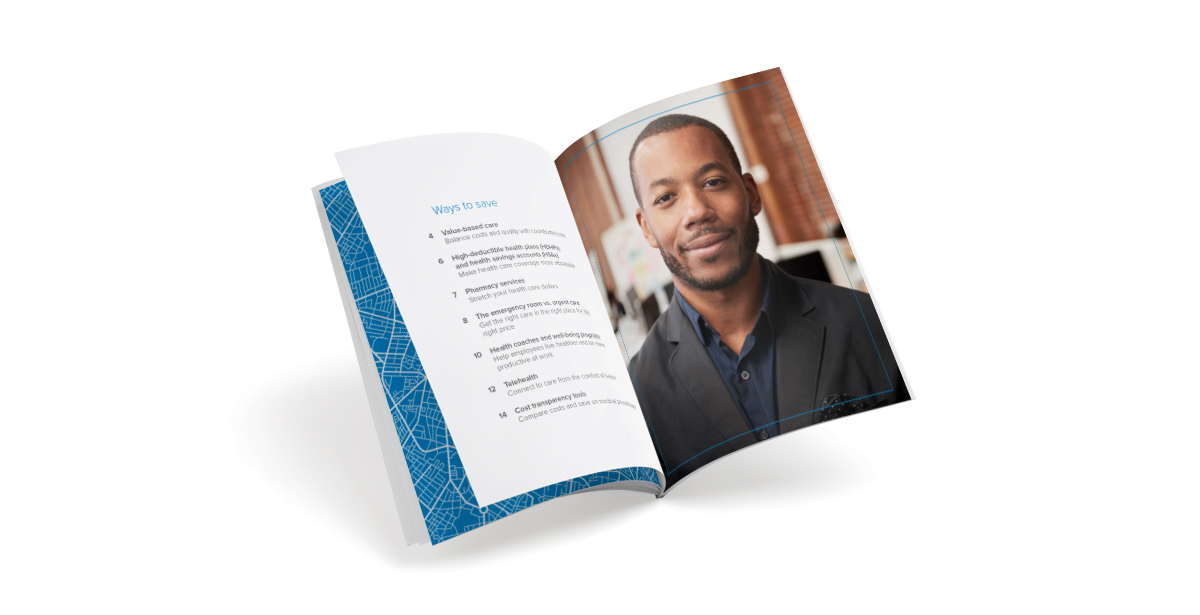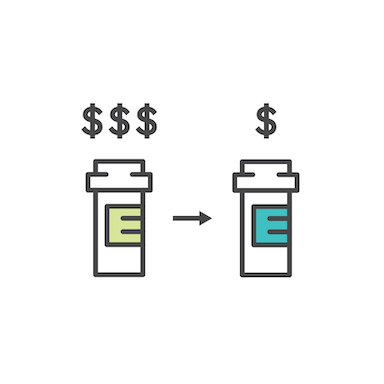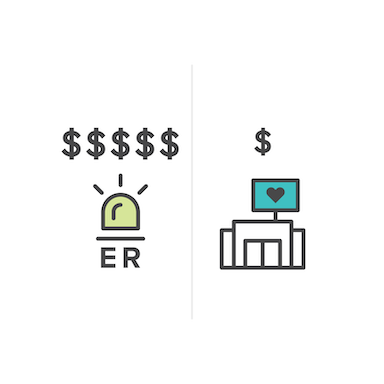 Loading...
Loading... Loading...
Loading...
Show employees you mean business by offering affordable and comprehensive health care benefits. A healthy benefits package not only improves employee retention, it’s a table stake in recruiting top talent.
With all the options on the market today, it’s possible to prioritize both the health of your employees and the health of your bottom line. Discover some of the most popular and innovative tools to consider when designing or re-designing your group health insurance plans.
Percentage of Americans who say health insurance was a deciding factor or positive influence in choosing their current jobs
- America’s Health Insurance Plans (AHIP) survey




Employees can have an appointment with a provider 24/7/365 over the phone, video or secure instant messaging. The doctor can even send a prescription to the nearest pharmacy.
Now how about that?
Therapy costs can add up quickly. Most virtual care appointments are under $100 and more convenient than in-person sessions.
A Regence study showed that consumers saved, on average, about $100 per visit by using virtual care instead of in-person office, urgent care or emergency room visits.

From medical neighborhoods to accountable care organizations, there are many emerging network models in health care today. They all fall under the umbrella of value-based care, an approach that yields healthier outcomes, better patient experiences and cost savings.
When working on employee benefits planning, here’s what to consider when evaluating value-based health plan partners:
- Offerings: What’s available where your employees live and work?
- Age: How long has the program been in place?
- Relationships: How do the health plan and the provider practices collaborate to understand local dynamics?
- Reach: Is the health plan’s value-based provider network available everywhere you have employees?



Many health plans today offer access to coaches who can work one-on-one with employees to reach their health goals—from reducing stress to getting better sleep. Employees can improve their performance in all aspects of life and work when they’re physically and mentally healthy.



Data from Regence shows that employees who have participated in a well-being program significantly lowered their risk factors for serious disease. Look for programs that offer more than biometric screenings, and truly consider what matters most to your employees, whether that’s financial support, flexible work schedules or mental health counseling.
Whether employees need help managing chronic health conditions, have questions about generic medications or want home delivery services, there are plenty of pharmacy programs and tools you can offer to help them.
Home delivery: Employees get long-term prescriptions shipped right to their doorsteps.
Site of care: For infused medications, there may be more convenient and less-expensive options, such as getting treatment at home.
90-day fill: Having more supply of a medication on hand means fewer refills and less likelihood of missing a dose.
Specialty medications: Condition-specific care teams can help employees with medication management, benefit coordination and financial programs that may help lower out-of-pocket costs.
Pharmacist-designed clinical programs: Employees get extra support to manage chronic conditions and stay on track with treatment plans.
Medication transparency tools: Access to medication effectiveness, safety and cost information helps employees compare options and choose the best fit for their health and budget.
Pairing a high-deductible health plan (HDHP) with a health savings account (HSA) is a great way to give your employees more flexibility and responsibility over their own health care funds. Both you and your employees can contribute tax-free money to an HSA for medical expenses that insurance won’t cover as well as out-of-pocket expenses for covered care.
Here’s why an HDHP/HSA combination could be a win-win for you and your employees:
HSA balances earn tax-free interest. Once employees reach a determined account balance, they can invest their HSA funds for better saving potential. Learn more about HSAs.
Regence members can use the Cost Estimator to compare prices of hospital stays, MRIs, surgeries, X-rays and more based on their deductible and out-of-pocket maximum. To see how medical costs stack up in your area, check out the Health Cost Institute’s Healthy Marketplace Index.
Not every medical condition requires a visit to the emergency room, but many people go there without considering other options, such as urgent care. Educating your employees about where to go and when not only ensures they find the best care for their health concerns, it could also save them hours of wait time and spare them excessive costs.




